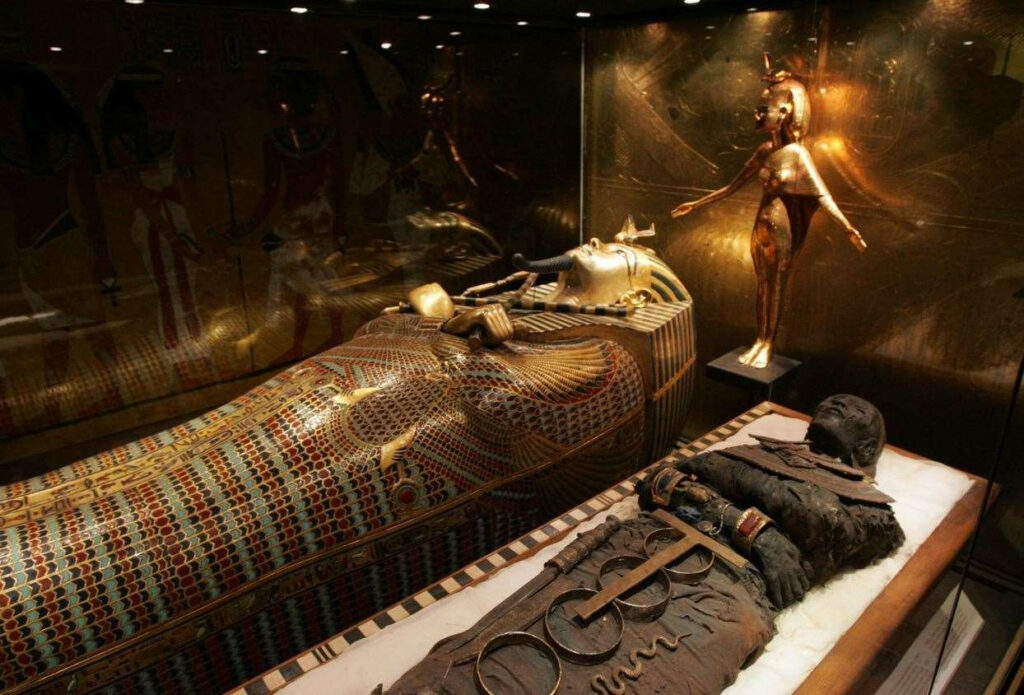November 4, 2022 marked the 100th anniversary of the discovery of King Tutankhamun’s tomb by archaeologist Howard Carter. The event propelled the once obscure boy king to worldwide fame and changed both his afterlife and the field of archaeology forever. As more of Tut’s 5,400 well-preserved burial artifacts are set to go on display at the new Grand Egyptian Museum, fascinating details continue to emerge about his life, death, and legacy.

Tutankhamun: Frail King or Mighty Warrior?
Tutankhamun has long been portrayed as a feeble and sickly ruler who walked with a limp. However, recent research challenges this notion:
Evidence of Tut’s Strength and Vitality
- Military equipment like chariots and armor in his tomb depict him as a hunter and warrior

- Inscribed blocks from his temple show him leading charioteers in battle
- Examination of his mummy reveals his alleged clubfoot deformity may have been mild
While the cause of Tut’s early death around age 19 remains a mystery, he seems to have been a more physically capable pharaoh than once thought. Further DNA analysis of his mummy could provide more clues.
The Stigma That Saved Tut’s Tomb
Ironically, Tut’s initial obscurity helped preserve his burial place. His father Akhenaten was considered a heretic king for banishing worship of all gods except Aten. After Akhenaten’s death, Egyptians erased mentions of him and his son Tutankhaten, who took the name Tutankhamun.

This ignominy meant Tut’s small tomb was overlooked by robbers for millennia, until Carter’s monumental find catapulted him to fame. Tut’s untimely death also forced craftsmen to hastily repurpose and patch together objects for his burial, leaving intriguing signs of a rush job.
A Turning Point for Archaeology and Egyptian Antiquities
Carter’s discovery fueled Egyptian nationalist sentiments and demands to stop the removal of antiquities from Egypt by foreign explorers. It set in motion a gradual shift in laws and practices, culminating in Egypt’s total independence in 1953 and a 1983 law banning antiquities from leaving the country.
At the same time, Carter set a new standard for meticulous tomb excavation and documentation that became a model for the field. Thanks to his team’s decade-long effort, Tut’s treasures are now accessible for public viewing and scientific study like never before as the next chapter of his afterlife unfolds.

